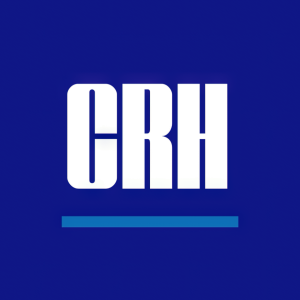CRH publishes IFRS to U.S. GAAP transition information
- None.
- None.
Insights
The transition of CRH plc from IFRS to U.S. GAAP accounting standards is a significant event that may influence investor perception and the company's financial transparency. The reconciliation of financial statements for full-year 2021 and 2022 under U.S. GAAP, which are now publicly available, provides an opportunity to assess the company's performance through a different accounting lens. U.S. GAAP tends to be more rules-based, which could result in different revenue recognition timings and expense classifications compared to the principle-based IFRS.
Investors should closely examine the restatements as they may reveal new insights into the company's financial health, such as changes in revenue, liabilities, or equity. This shift could also affect the company's valuation metrics, like the price-to-earnings ratio, potentially leading to a reevaluation of the stock by the market. Analysts and investors will need to adjust their models and forecasts accordingly, especially considering the company's outlook guidance was previously provided on an IFRS basis.
CRH plc's decision to adopt U.S. GAAP could be strategically motivated to align with U.S. market standards, potentially facilitating the company's access to U.S. capital markets or mergers and acquisitions activities. This transition may also be seen as a move to increase comparability with U.S.-based peers, which could be beneficial for investors who use benchmarking as a tool for assessing investment opportunities.
However, the change in accounting standards may initially cause confusion and require an educational effort for stakeholders to understand the implications on reported financials. It is crucial for market participants to note the differences in key financial metrics post-transition to accurately evaluate the company's market position and performance trends.
CRH plc's transition to U.S. GAAP reflects a compliance with regulatory requirements that may be a precursor to further business activities in the United States, such as listings on U.S. exchanges or engaging in transactions with U.S. entities. The legal implications of this transition include adherence to the Sarbanes-Oxley Act for internal controls and disclosure requirements, should the company decide to list on a U.S. exchange.
It is also important to consider the legal and regulatory environment in which CRH operates, as the adoption of U.S. GAAP may necessitate changes in internal reporting structures, governance and control mechanisms. Stakeholders should monitor the company's communications for any indications of strategic shifts that might arise from this accounting change, as well as any potential legal considerations that could impact operations.
Equivalent transition impact disclosures will be provided for the financial year ended December 31, 2023 on February 29, 2024.
Please note that the Company's most recently published outlook guidance provided to the market on November 21, 2023, in respect of the year ended December 31, 2023, was issued on an IFRS basis.
Financial restatements under
About CRH
CRH (NYSE: CRH, LSE: CRH) is the leading provider of building materials solutions that build, connect and improve our world. Employing c.75,800 people at c.3,160 operating locations in 29 countries, CRH has market leadership positions in both
Registered Office: No 12965. Registered Office: 42 Fitzwilliam Square,
View source version on businesswire.com: https://www.businesswire.com/news/home/20240206966717/en/
Contact CRH at +353 1 404 1000
Albert Manifold, Chief Executive
Jim Mintern, Chief Financial Officer
Frank Heisterkamp, Director of Capital Markets & ESG
Tom Holmes, Head of Investor Relations
Source: CRH plc
FAQ
What is the impact of transitioning to U.S. GAAP on CRH plc's financial results for 2021 and 2022?
When will equivalent transition impact disclosures for the financial year ended December 31, 2023 be provided?
What basis was the company's outlook guidance for 2023 issued on?







